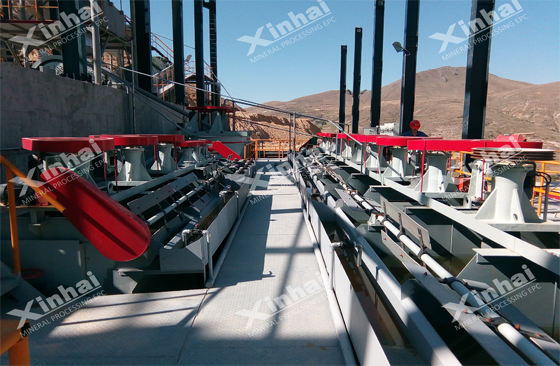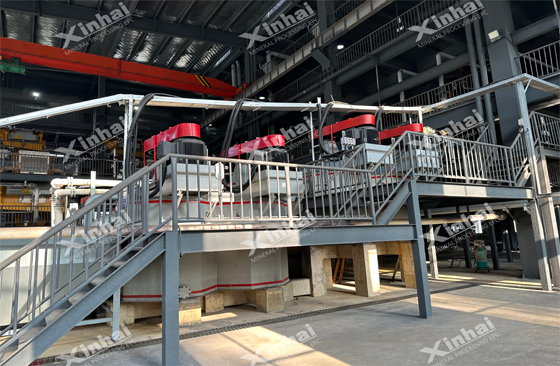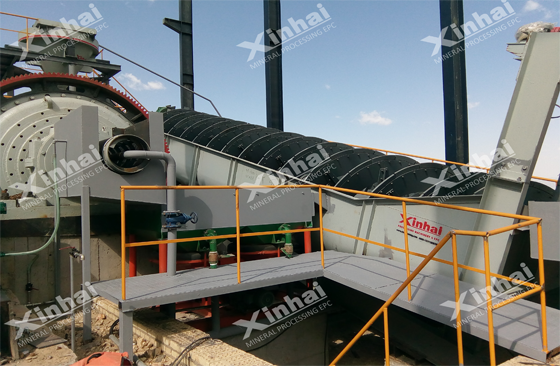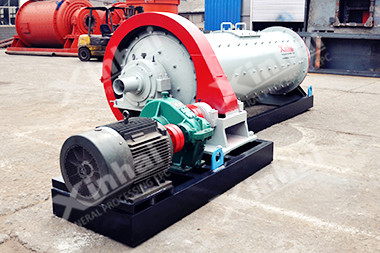- Home
- About
-
Mineral Processing EPC+M+O

Providing optimized solutions for your mine, one-stop service for mineral processing plant!
View details -
Product
- Grinding
- Classifying
Grinding & Classifying
- Flotation
- Gravity Separation Equipment
- Magnetic Equipment
- Gold Extraction Equipment
- Washing Equipment
Separating Process
- Thickening
- Dewatering Machine
Thickening & Dewatering
- Accessories
- Auxiliary Product
Consumables

Xinhai mineral processing equipment mainly include: grinding equipment, flotation equipment, dewatering equipment, magnetic separation equipment, and so on. Some of the equipment is Xinhai independent research and development, and has been awarded national patent. View details
-
Solutions
- Gold Tailings
- Tailings
Tailings

Gold CIP Production Line adsorbs gold from cyaniding pulp by active carbon including 7 steps: leaching pulp preparation, cyaniding leaching, carbon adsorption, gold loaded carbon desorption, pregnant solution electrodeposit, carbon acid regeneration, leaching pulp. View details
- Case
-
News
- Contact
Improving Graphite Ore Processing for Efficiency and Purification
2025-04-02 XinHai Views (221)Graphite is an industrial mineral of critical application to a wide range of industries including energy storage, steelmaking, and electronics. With increasing demands for high-purity graphite, the processing of graphite ore is of top priority for the refining and mining industry.

Knowledge of Graphite Ore and Its Industrial Significance
Graphite naturally occurs in flake, amorphous, and vein graphite types. Preference during processing is mainly based on the ore type and application. Flake graphite, for instance, is especially ideal for the production of lithium-ion batteries due to its crystalline and conductive nature. Amorphous graphite is also ideally used in lubricants, refractions, and steel manufacturing.
With the emergence of electric vehicles (EV), renewable energy storage, and new-generation manufacturing technology, the international market for graphite is expanding leaps and bounds. Industries are therefore investing in new processing technologies in an attempt to enhance efficiency, reduce environmental footprints, and deliver high levels of the new age industry.
Major Steps in Processing Graphite Ore
Crushing and Grinding
The first stage in processing graphite ore involves crushing and grinding the raw material into a fine powder. This step is essential for liberating graphite flakes from gangue minerals, making subsequent separation processes more effective. Advanced milling technologies, such as high-pressure grinding rolls (HPGR) and stirred media mills, are being increasingly utilized to enhance efficiency and reduce energy consumption.
Flotation Beneficiation for Graphite Extraction
Flotation is the most commonly used method for graphite purification. It involves adding chemical reagents—such as collectors and frothers—that selectively adhere to graphite particles, allowing them to separate from impurities. Key flotation stages include:
Rougher flotation: Initial separation of graphite from waste materials.
Cleaner flotation: Additional purification through multiple stages.
Scavenger flotation: Recovery of remaining graphite from flotation tailings to maximize yield.
Recent advancements in flotation technology include the use of environmentally friendly reagents, ultrasonic flotation techniques, and column flotation to improve separation efficiency and reduce chemical consumption.

Methods of Purification for High-Purity Graphite
After flotation, further purification is required to yield high-purity graphite for niche applications. Several purification techniques are employed based on the carbon content desired:
Chemical Purification: Acid and alkali treatment remove non-carbon impurities, often yielding graphite of over 99% purity. The process is widely practiced in the battery industry but is environmentally unsound due to the utilization of aggressive acids.
Thermal Purification: Purification at high temperatures (>2500°C) effectively removes impurities without the use of chemicals, making it the ultra-high-purity application of choice (carbon content of 99.9% and higher). It is energy-intensive and requires specialized equipment.
Electrochemical Purification: This new technique uses an electrochemical cell to remove impurities with limited use of chemicals, offering a cleaner and greener alternative to conventional methods.
Drying, Classification, and Final Processing
After purification, the graphite is dried and classified according to particle size and shape. This is done to further refine the final product for certain industrial uses, e.g., battery anode materials, conductive coatings, or refractories.

Advances in Graphite Processing Technology
Graphite processing technology is changing in various ways for greater efficiency, higher sustainability, and quality of the final product. Included in these advances are:
Eco-Friendly and Sustainable Processing: Reduction in chemicals and energy in the attempt to make a cleaner process environment.
Next-Generation Battery Technologies High-Purity Graphite: Electric vehicle technology and energy storage technologies increasingly call for ultra-high-purity graphite.
Graphite Recycling from Spending Batteries: Another environmentally friendly option to reduce reliance on natural graphite mining and facilitate circular economy.
Alternative Development of Synthetic Graphite Alternative: Other industries are pushing for synthetic graphite production in the bid to replace the natural graphite supply and respond to the higher demands.
With the growing demand for high-purity graphite, it is now critical that industries that depend on this valuable mineral drive graphite ore processing to its limits. With the acquisition of new state-of-the-art methods of beneficiation, green technology, and new purification technology, companies will be able to boost efficiency, reduce cost, and provide high-quality graphite for future applications.
Iron Processing Methods: A Comprehensive Guide
... [more]
Lithium Ore Processing Methods: Efficient Extraction Techniques for Battery-Grade Lithium
Explore advanced lithium ore processing methods, including hard rock and brine extraction, to optimize lithium recovery for EVs and renewable energy. Learn key techniques and innovations. ... [more]
Related Article
- What are the Technologies for Lithium Production
- Gold Heap Leaching Summery
- How Hard Rock Lithium Processing Works: Mine to Market
- Global Mining Industry Analysis: Trends, Challenges, and Opportunities in 2025
- Phosphate Ore Processing and Beneficiation Plant Design: A Comprehensive Engineering Approach
- Titanium Ore Beneficiation: Navigating Global Supply Shifts with Advanced Processing Solutions
- Lithium Ore Processing Methods: Efficient Extraction Techniques for Battery-Grade Lithium
- Chrome/Chromite mining company in South Africa
- Efficient Chrome Ore Gravity Processing Plants: Cost-Effective Solutions for Mineral Recovery
- What machines are used in lithium processing?
Mineral Processing EPC
Solutions
CONTACT US
- Tel: 0086 15901320633
- Fax: 0086 10 59621207
- Email: mhxu@xinhaimining.net
© 2017 Shandong Xinhai Mining Technology & Equipment Inc. Technical Support: Beijing Xinhulian Technology Co., Ltd.
Factory Address: No. 188, Xinhai Street, Fushan high-tech industrial development district, Yantai, Shandong, China






